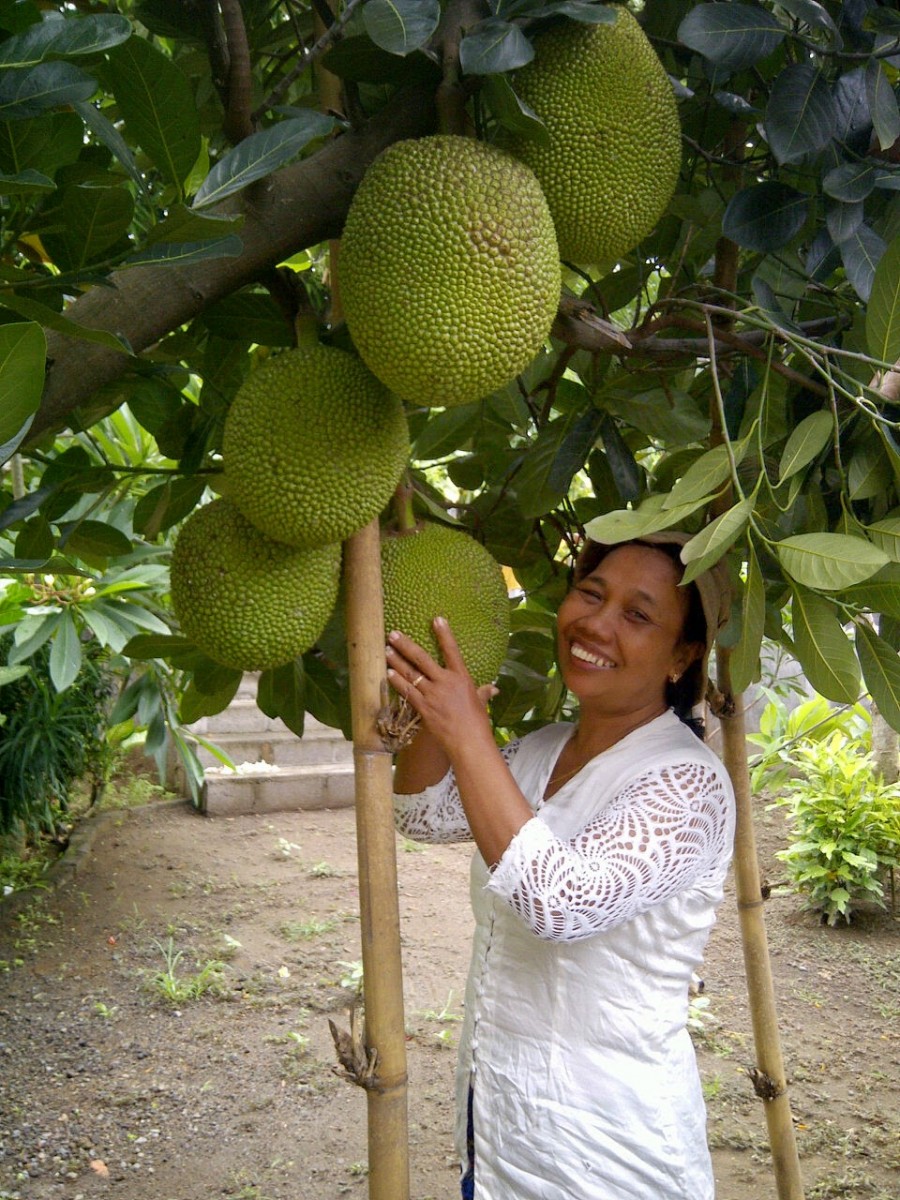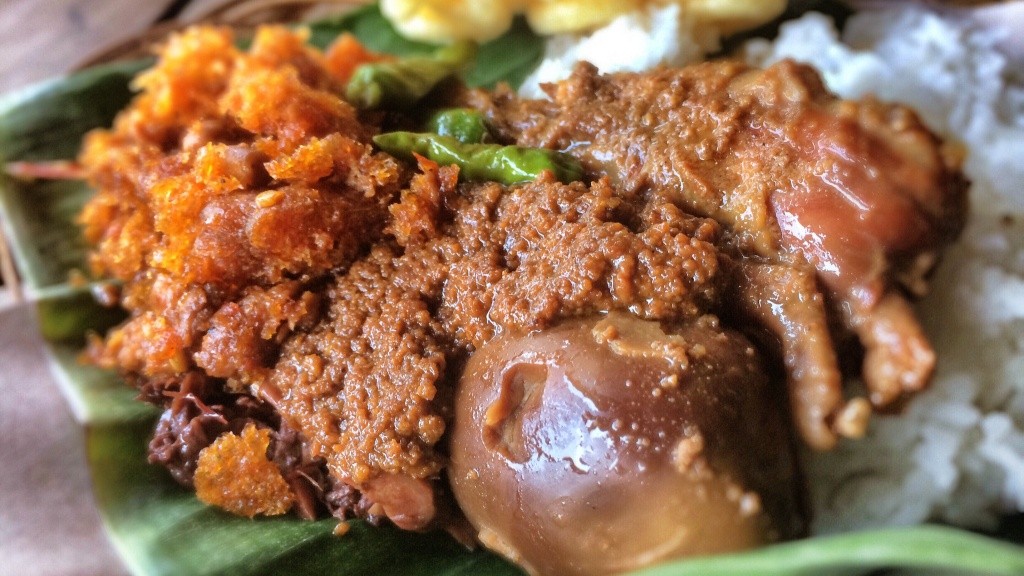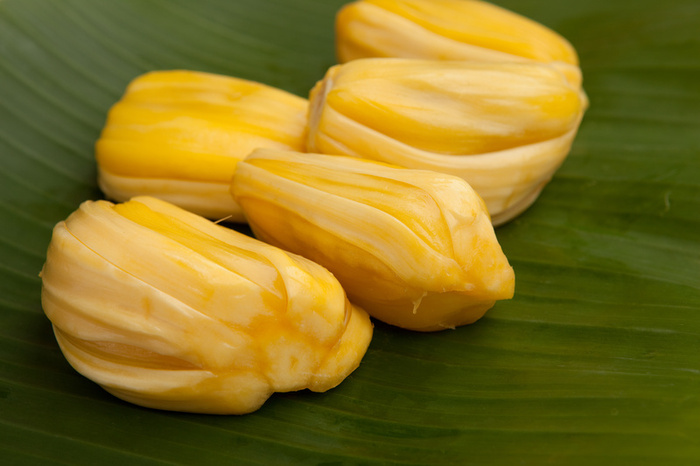image of Balinese woman and her Jackfruit Tree
“This dish is jackfruit?!” This is something I’ve said more than once. Jackfruit is very common here in Bali and is one of the most versatile fruits in the world. This is because ripe jackfruit is eaten as a fruit and unripe jackfruit is prepared as a vegetable.
SAVORY and SWEET
Young jackfruit is used in stews or curries, boiled, roasted; or fried and eaten as a snack. Jackfruit “steaks” have the taste and texture of meat and make an amazing vegetarian burger. The seeds of a ripe jackfruit are delicious when roasted and can also be ground into a flour. Traditional dishes feature jackfruit such as:
Gulai nangka padang- a curry dish from Padang, West Sumatra made with jackfruit, long beans, coconut milk, turmeric, kaffir lime, and lemongrass.
Lawar- a Balinese dish from chopped jackfruit, grated coconut, chopped meat and sambal.
Gudeg- a Javanese dish made from young unripe jackfruit boiled for several hours with palm sugar and coconut milk.
image of Javanese gudeg. Source: indonesiatraveldb.com
Balinese use jackfruit in local desserts such as es buah (fruit, ice, coconut milk and sugar), es campur (jelly, fruit, and young coconut meat with coconut milk), sweet jackfruit chips, or of course just the fruit itself, which looks like this:
source: onlyfoods.net
Some other amazing uses of jackfruit include:
- The leaves of jackfruit tree are useful for curing fever, boils and skin diseases. When heated, they prove useful in curing wounds.
- The latex of the fruit is helpful in treating dysopia, opthalmities and pharyngitis.
- The latex can also be mixed with vinegar to heal abscesses, snakebites and glandular swellings.
- The wood of jackfruit tree is widely used in manufacturing musical instruments, furniture, doors, windows and roof constructions.
- The seed starch is useful in relieving biliousness, while the roasted seeds are regarded as aphrodisiac.
- To heal ulcers, the ash of jackfruit leaves is burnt with corn and coconut shells and used either alone or mixed with coconut oil.
- The root of jackfruit tree forms the remedy for skin diseases, fever and diarrhea.
- The heartwood of the tree is used by Buddhist forest monastics in Southeast Asia, for dying the robes of the monks to light brown color.
- In China, the pulp and seeds of jackfruit are considered as a cooling and nutritious tonic. The fruit is useful in overcoming the influence of alcohol on a person’s body system. (1)
photo of jackfruit tree in Chiang Mai, Thailand. 2016.
Jackfruit trees, which can bear up to 250 fruits per year (2), are easy to grow. They flourish in tropical, humid temperatures, and the tough outer shell of the fruit serves as a good defense against pests. Jackfruit is a source of superfood for people in Southeast Asia, where many suffer from hunger. The flesh is high in fiber, as well as calcium, iron, potassium, and vitamin A,B, &C. The seeds are a rich source of protein. (3) Jackfruit is a miracle fruit– one tree can easily feed a family.
The taste of jackfruit is hard to pinpoint- but not as much as durian, of course (although they look similar from the outside!). Like durian, they do not smell very pleasant from the outside, kind of stinky and rotten. But this doesn’t reflect the taste at all. When unripe, the taste is similar to chicken or pulled pork, which make a great vegetarian meat alternative. When ripe, it has a starchy flavor, is sweet like a mango or pineapple, with a chewy texture.





Be First to Comment